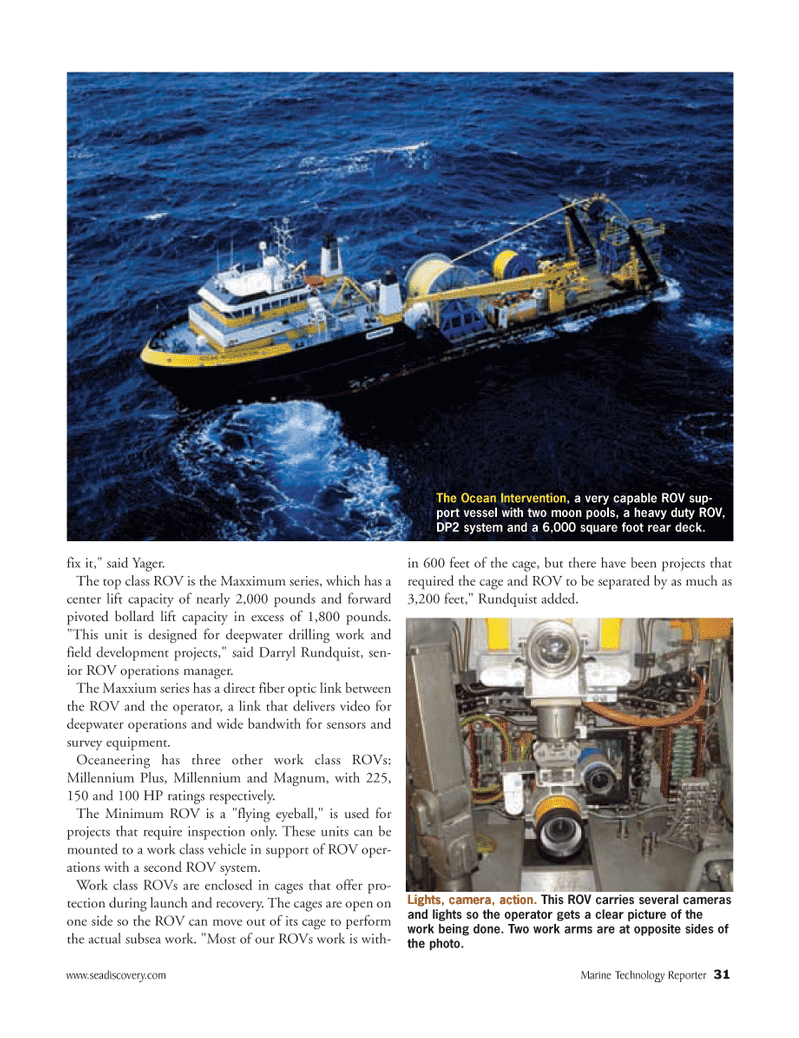
Page 30: of Marine Technology Magazine (July 2005)
Read this page in Pdf, Flash or Html5 edition of July 2005 Marine Technology Magazine
www.seadiscovery.com Marine Technology Reporter 31 fix it," said Yager.
The top class ROV is the Maxximum series, which has a center lift capacity of nearly 2,000 pounds and forward pivoted bollard lift capacity in excess of 1,800 pounds. "This unit is designed for deepwater drilling work and field development projects," said Darryl Rundquist, sen- ior ROV operations manager.
The Maxxium series has a direct fiber optic link between the ROV and the operator, a link that delivers video for deepwater operations and wide bandwith for sensors and survey equipment.
Oceaneering has three other work class ROVs:
Millennium Plus, Millennium and Magnum, with 225, 150 and 100 HP ratings respectively.
The Minimum ROV is a "flying eyeball," is used for projects that require inspection only. These units can be mounted to a work class vehicle in support of ROV oper- ations with a second ROV system.
Work class ROVs are enclosed in cages that offer pro- tection during launch and recovery. The cages are open on one side so the ROV can move out of its cage to perform the actual subsea work. "Most of our ROVs work is with- in 600 feet of the cage, but there have been projects that required the cage and ROV to be separated by as much as 3,200 feet," Rundquist added.
The Ocean Intervention, a very capable ROV sup- port vessel with two moon pools, a heavy duty ROV,
DP2 system and a 6,000 square foot rear deck.
Lights, camera, action. This ROV carries several cameras and lights so the operator gets a clear picture of the work being done. Two work arms are at opposite sides of the photo.
MTR#1 (17-32).qxd 7/19/2005 10:03 AM Page 31

 29
29

 31
31
